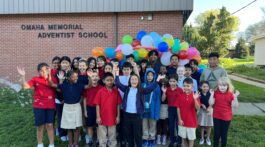“Open my eyes to see.”
(Ps. 119:18 NLT)
“No eye has seen, no ear has heard,
and no mind has imagined
what God has prepared
for those who love him.”
(1 Cor. 2:9 NLT)
Can you see?
Do you hear?
I often pray for my eyes to be opened to see and know God, but I’m not sure I know what I’m asking. I see – and don’t see. I know – and don’t know.
Recently I was reading about Jesus’ appearances, in physical form, during the 40 days immediately following his resurrection.1 He first appeared to Mary Magdalene at the tomb early on Easter Sunday. Next he appeared to the disciples as they were hiding in Jerusalem, shaken by the events of the weekend. His third appearance was to the disciples on the road to Emmaus, and finally to the disciples by the Lake of Tiberias, the morning he helped with a large catch of fish.
A mysterious common thread running through all of these appearances if that Jesus is not recognized at first. Mary thinks he’s the gardener, the disciples in Jerusalem think he’s a ghost, the pair on the Emmaus road only recognize him after he vanishes, and by the Sea of Tiberias, the disciples recognize him only after the great haul of fish.
Author Bourgeault suggests that “the wisdom walk with Jesus is at every step of the way a recognition drama. At each new level of subtlety something in us must be able to see, to find our way to who he now is.” Jesus wants them “to be able to see him through the light of their own hearts…He has to take them through this drama of recognition one more time so that they will know beyond a shadow of doubt how to find him from the inside, how to recognize him hereafter and in all times and places when his fleshly appearance becomes yet more subtle.”2
The two on the Emmaus road do not recognize their master because of their self-pity and nostalgia. “They are stuck in their own story, and their stuckness is what makes them unable to see the person standing right before their faces. They are trapped in the past, filled with self-pity and doubt. Jesus…rewrites their story for them. Verse by verse he leads them through the pertinent Old Testament scriptures,” showing them that death isn’t the end. He blesses their bread, echoing the Last Supper, then vanishes. “Finally they get it. ‘Were not our hearts burning within us while he was talking to us?’ Finally they see – and the decisive breakthrough is not so much in what they see as in how they see…Their attuned hearts are the instruments of recognition,” which will “bind them to their risen Lord moment by moment forever. They have finally located their inner homing beacon.”3
At the tomb Sunday morning, Mary Magdalene’s grief for the One she loved has blinded her. She was “still clinging to the physical person…She was still looking for Jesus as a tangible corpse, not an intangible aliveness. Only when her perspective shifted did he come into view.”4 Jesus is “present in physical density only insofar as is necessary to match the density of doubt that is blocking the view. Mary Magdalene needs only to see him in order to be reassured. Thomas’s doubt is deeply visceral, so he receives a fully visceral resurrection appearance…Jesus is corporeally present only to the degree that people cannot yet see with the eye of the heart. As the eye of the heart opens, there is more and more freedom to release the physical traces and simply allow the naked immediacy of love to meet heart to heart.”5
“During the forty days until his ascension, Jesus is relentlessly pushing
and prodding his troops toward a new level of subtlety, like a mother
bird pushing her fledglings out of the nest. ‘You know how to do this
now,’ he so much as tells them. ‘You do know the way. You learned
the principles as my students. And what was still lacking in you before
the sacrament of my passion is no longer lacking. What once tripped
you up – your fear, your doubt, your craving – no longer does so.
The bridge has been crossed; I myself am that bridge. In my realized
eternal nature you will have intimate access to your own realized eternal
nature.”6
Their eyes were opened! They knew him and ever after that fire burned brightly as they continued his work and spread the gospel.
As I meditated on these thoughts, I was surprised to remember many instances in Scripture where someone’s eyes weren’t able to see and discern what was obviously right there. The ram in the thicket on Mt. Moriah, the armies of God on the mountains surrounding Dothan as the Aramean troops advanced on Elisha, the angel visitors to Abraham and Sarah, the blindness of David’s family to the young shepherd boy when Samuel came to anoint the next king of Israel.
The questions beg, Where is my blindness? Where might my eyes need to be opened and what might I see? Am I stuck in my own story, filled with self-pity and doubt? Am I blinded by grief, by fear? What would Jesus like for me to see?
When doubt dissipates, the view is no longer blocked. He opens the eyes of our hearts – those instruments of recognition – and the ‘naked immediacy of love’ meets us heart to heart.
He is Emmanuel, God present, the One who is with us.
I don’t want to miss Him anymore.
Ann Halim is editor of e-Weekend, a newsletter for the College View Seventh-day Adventist Church in Lincoln, Nebraska. Reprinted with permission.
1The Wisdom Jesus, Cynthia Bourgeault, p. 127ff
2ibid., p. 129
3ibid., p. 129, 130
4ibid., p. 130
5ibid., p. 131
6ibid., p. 131










